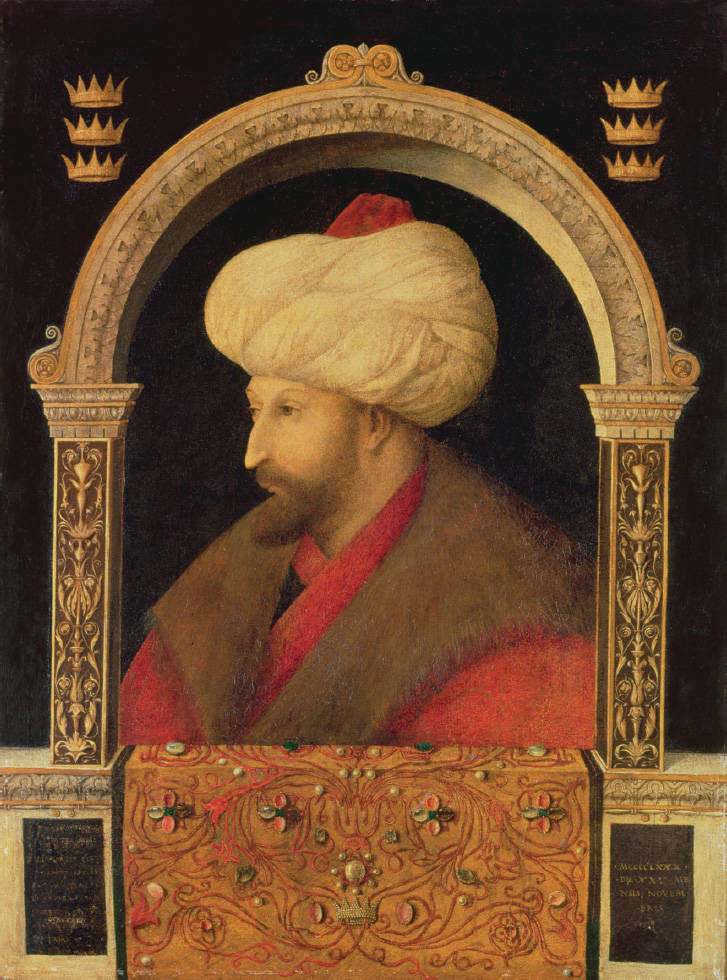Visual Source 12.1
Gentile Bellini, Portrait of Mehmed II
The year 1453 marked a watershed in the long relationship between Christendom and the Islamic world, for it was in that year that Ottoman Sultan Mehmed II decisively conquered the great Christian city of Constantinople, bringing the thousand-year history of Byzantium to an inglorious end. To many Europeans that event was a catastrophe, and Mehmed was the “terror of the world.” On hearing the news, one Italian bishop, later to become the pope, foresaw a dismal future for both the Church and Western civilization: “Who can doubt that the Turks will vent their wrath upon the churches of God? . . . This will be a second death to Homer and a second destruction of Plato.” Others, however, saw opportunity. Less than a year after that event, the northern Italian city of Venice signed a peace treaty with the Ottoman sultan, declaring “it is our intention to live in peace and friendship with the Turkish emperor.” Some even expressed admiration for the conquering Muslim ruler. George of Trebizond, a Greek-speaking Renaissance scholar, described Mehmed as “a wise king and one who philosophizes about the greatest matters.”
For his part, Mehmed admired both classical and contemporary European culture, even as his armies threatened European powers. This cosmopolitan emperor employed Italian scholars to read to him from ancient Greek and Roman literature, stocked his library with Western texts, and decorated the walls of his palace with Renaissance-style frescoes. Seeing himself as heir to Roman imperial authority, he now added “Caesar” to his other titles. Although Islam generally prohibited the depiction of human figures, Mehmed’s long interest in caricatures and busts and his desire to celebrate his many conquests led him to commission numerous medals by European artists, bearing his image. In 1480, he also had his portrait painted by the leading artist of Venice, Gentile Bellini, who had been sent to the Ottoman court as a cultural ambassador of his city.
Visual Source 12.1 shows Bellini’s portrait of the emperor sitting under a marble arch, a symbol of triumph that evokes his dramatic conquest of Constantinople. The three golden crowns on the upper left and right likely represent the lands recently acquired for the Ottoman Empire, and the inscription at the bottom describes Mehmet as “Conqueror of the World.” Not long after the painting was made, Mehmed died, and shortly thereafter his son and successor sold it to Venetian merchants to help finance a large mosque complex. Thus the portrait returned to Venice.

Question
What overall impression of the sultan does this portrait convey?
Question
Why might this Muslim ruler want his portrait painted by a Christian artist from Venice?
Question
Why might Bellini and the city government of Venice be willing—even eager—to undertake the assignment, less than thirty years after the Muslim conquest of Constantinople?
Question
The candelabra decorating the arch were a common feature in Venetian church architecture. Why might the sultan have agreed to this element of Christian symbolism in his portrait?
Question
What does the episode surrounding this portrait indicate about the relationship of Venice and the Ottoman Empire in the wake of the conquest of Constantinople?